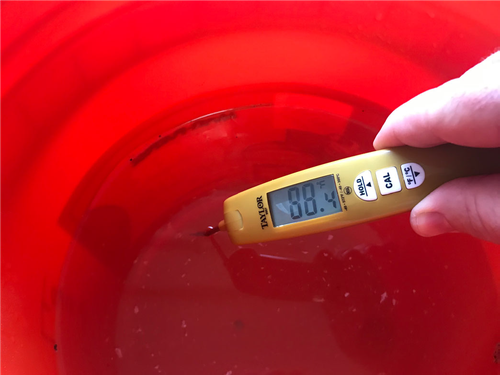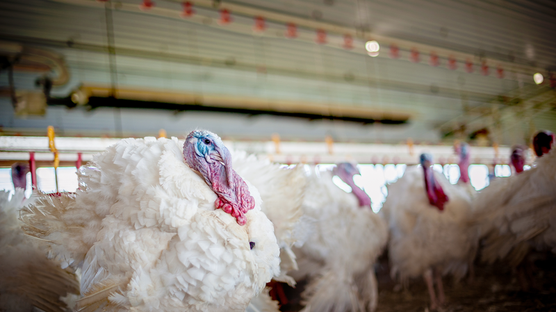
Published on April 15, 2019
Are your barn sensors playing tricks on you?
Have you ever been in this situation? It’s day 3 of brooding your new poults. Before their arrival, you carefully cleaned the barn and set out feeders and drinkers. You’ve also carefully set up your barn and climate system so that the temperature is just right. However, you’re noticing that the poults are not spread out and are not eating and drinking like they should. It seems as though they are chilled. You’re frustrated and confused, thinking, Well what do I do now?
Although there could be a number of factors at play in a situation like this, one of the first areas to investigate is the function and accuracy of your climate control sensors. Barn climate systems are only as good as the accuracy of the sensors in place. The first few days of life are very sensitive for a young bird. Even slight changes in air temperature have an impact on body temperature and their overall development. Not only do inaccurate sensors negatively impact flock performance, but they can result in heaters and fans running more than they should, leading to increased energy costs.
How to investigate sensor accuracy in between flocks
If you are in between flocks, the first course of action is to look at the difference between sensors.
- Place sensors a foot or two above the floor, all at the same height.
- Fully open the tunnel doors/curtains, and turn on all the tunnel fans.
- After about 10 minutes, sensors should read within one degree of each other.
- If one sensor is reading differently, look at the environmental factors. Is there a hole in the ceiling insulation near the sensor? Look to fix these issues before moving to the next step.
- Check the connection between the sensor and the controller. Are wires loose or showing corrosion? If yes, you may need to replace the sensor. If no, the sensor should be recalibrated to read the same temperature as the other sensors in the house.
How to investigate sensor accuracy while flocks are in the barn
Going back to the scenario at the beginning of this article, usually temperature issues are noticed while the flock is in the barn. By measuring accuracy using the air temperature, the heat generated by the birds will impact your sensor reading. When turning on the tunnel fans, the heat generated by the birds will cause the sensors at the tunnel fan end of the house to read higher than those toward the inlet end of the house. A handy trick to measure accuracy is to use a bucket of water and a food thermometer with an accuracy of +/- 0.5°F.
- Fill a five-gallon bucket approximately half full of water. Ideally, the water temperature would be close to room temperature, but this is not a requirement.
- Measure the water temperature with the high-accuracy thermometer. Take note of the water temperature.

Photo credit: UGA. Poultryventilation.com
3. Take the bucket of water to the first sensor in the house to be checked and insert the sensor into the water.

Photo credit: UGA. Poultryventilation.com
4. Wait one minute, then check to see if the temperature the controller is indicating is the same as the water temperature measured.
5. Wipe the sensor dry.
6. Repeat the procedure for the remaining controller sensors. The temperature of water in the bucket will tend to stay the same long enough to check the calibration of all the sensors in a house, especially if the water temperature is relatively close to house temperature.
If sensors are more than a degree off from the water temperature, chances are the sensor has a loose or faulty connection and requires replacement.
Don’t let your barn sensors give you a false sense of security. By making sure your sensors are functioning properly and accurate, your poults will thank you in return with healthy development that sets them on the right path for great flock performance.
For more details, download this info sheet from The University of Georgia College of Agricultural and Environmental Science Cooperative Extension.



